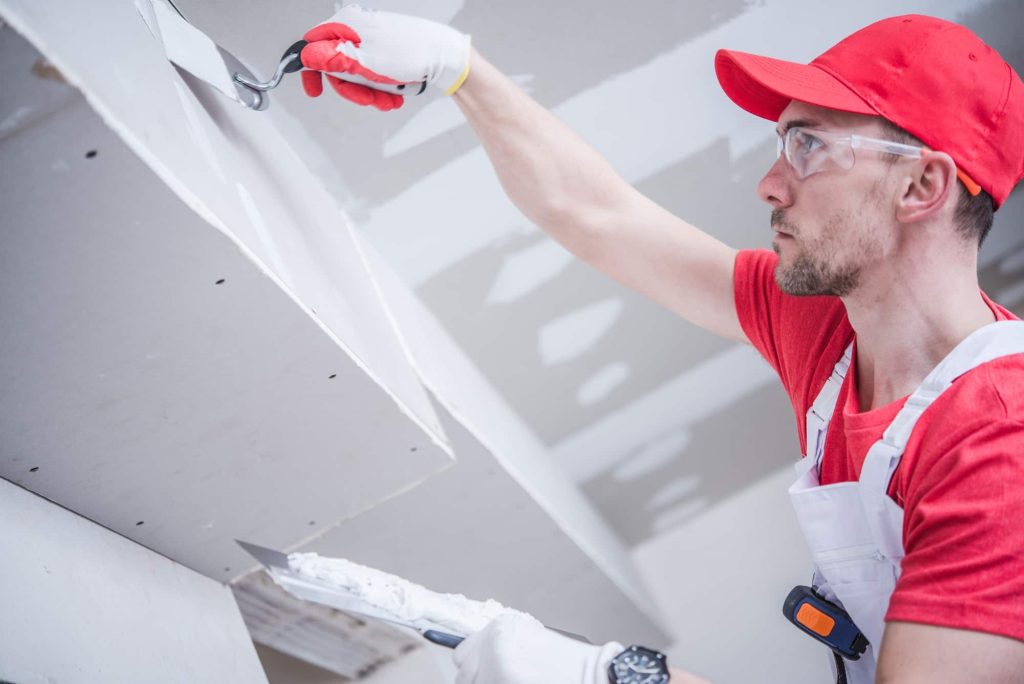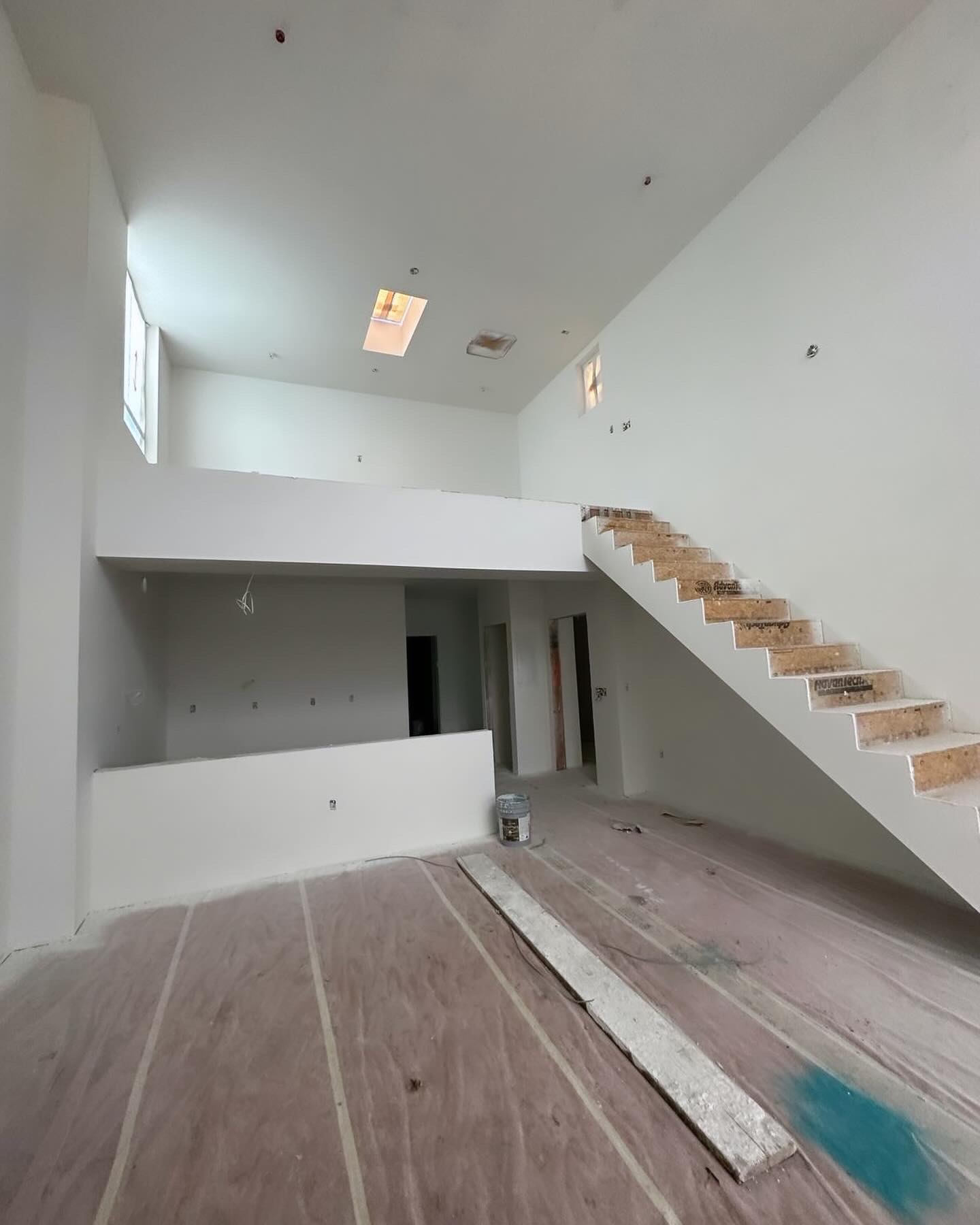Drywall Installment Facilitated: Tips for Perfect Outcomes
Drywall setup is typically perceived as a difficult task, yet with the right approach and expertise, it can come to be a workable endeavor. Selecting top quality products and preparing the installation location are vital very first steps that establish the structure for success. Understanding strategies for cutting, hanging, and completing drywall can considerably influence the result. As we explore these crucial suggestions, you may locate that even the tiniest adjustments in your strategy can bring about remarkably boosted results, leaving you to consider how these methods can transform your next project.
Picking the Right Materials
Choosing the suitable materials for drywall installation is critical to accomplishing a long lasting and aesthetically pleasing coating. drywall contractor. The main component, drywall sheets, usually been available in numerous thicknesses, with 1/2-inch sheets being basic for indoor wall surfaces. For locations needing additional wetness resistance, such as washrooms or kitchen areas, consider using environment-friendly board or concrete board, which are specifically designed to endure moisture

Additionally, selecting the best fasteners-- either screws or nails-- is essential for securing the drywall to the framework. Drywall screws are usually preferred for their holding power and minimized threat of popping. Take into consideration the finishing touches such as primer and paint, which not only boost the appearance but also protect the drywall from wetness and wear.
Preparing the Setup Area
Before starting the drywall setup process, it is vital to prepare the installation area completely. A tidy workspace decreases the risk of damages to existing products and enables for efficient movement throughout installation.
Following, inspect the wall surfaces and ceiling for any kind of blemishes, such as fractures, holes, or mold. Address these issues beforehand; spot any type of problems and allow adequate time for repairs to dry. In addition, ensure that electric outlets, buttons, and pipes are properly positioned and represented, as this will certainly impact drywall placement.
Consider the environmental problems. A stable temperature level and moisture degree are essential for optimum attachment and efficiency of the drywall products. Utilize a dehumidifier or heating unit to produce appropriate conditions. if necessary.
Trimming and Hanging Drywall
The trick to reliable drywall installment hinges on the exact cutting and hanging of the panels. Begin by measuring the space properly, taking into consideration any type of obstructions such as electrical outlets or home windows. Make use of a straight side and an utility knife to rack up the drywall along your dimensions, then break it along the racked up line for a clean break. For more intricate cuts, such as around electrical outlets, a drywall saw can be made use of for precision.

Always work from the top down and entrusted to right, guaranteeing that you keep a staggered pattern to enhance security. Effectively hanging the drywall sets the structure for a smooth surface, ultimately causing premium results in your drywall job.
Insulation and Mudding Techniques
While appropriate cutting and check this site out dangling of drywall sets the stage, the following crucial step includes understanding taping and mudding techniques to make sure a smooth coating. Taping is vital for enhancing joints and preventing fractures; it includes installing tape right into the used joint compound (mud) Start with a high quality fiberglass or paper tape, using the tape over the joint and pushing read this post here it right into the damp mud using a taping knife, guaranteeing no air bubbles stay.
When the tape remains in area, use a slim layer of joint substance over the tape, feathering the sides to create a smooth transition to the drywall surface. Allow this layer to dry totally before sanding it lightly to eliminate flaws. Repeat this procedure, applying extra coats of mud as needed-- normally a couple of layers-- while slowly broadening the application location with each layer to accomplish a seamless look.
After the final coat dries, sand the surface with a fine-grit sandpaper till smooth. drywall installation. Remember to wear a mask during sanding to stay clear of breathing in dust bits. Grasping these taping and mudding methods is important for accomplishing a professional-quality surface in your drywall installation
Finishing Touches for Excellence
Attaining a perfect drywall setup exceeds taping and mudding; it finishes in the ending up touches that raise the overall look. These last steps are essential in ensuring a professional-grade coating that boosts the looks of your area.
Begin by sanding the dried out joint compound to create a smooth surface area. Utilize a fine-grit sandpaper and a sanding block or post sander for ideal control. Pay particular interest to edges and edges, as these areas tend to call for more thorough work. After fining sand, wipe down the wall surfaces with a moist cloth to eliminate any dirt particles, making certain a clean surface area for painting.
Following, use a primer particularly designed for drywall. This step is crucial, as it assists secure the joint compound and offers a consistent base for the topcoat. When the guide dries out, examine for any type of imperfections, and retouch as required.
Verdict
Finally, effective drywall installment hinges on the cautious choice of products, extensive prep work of the installment area, and accurate implementation of reducing and hanging strategies. Mastery of taping and mudding processes is necessary for attaining a smooth finish. Additionally, interest to completing touches, consisting of priming and touch-ups, makes certain a professional-grade result. By adhering to these guidelines, the high quality of craftsmanship can be substantially boosted, adding to the overall aesthetic and functionality of the space.
Drywall setup is typically viewed as a difficult task, yet with the best method and understanding, it can end up being a manageable venture.Picking the suitable materials for drywall installment is vital to achieving a durable and visually pleasing coating.Prior to starting the drywall installment procedure, it is vital to prepare the installment area completely. Mastering these taping and mudding strategies is vital for attaining a professional-quality coating in your drywall setup.
In verdict, successful drywall setup hinges on the careful option of materials, complete preparation of the installment location, and specific implementation of cutting and hanging check over here methods.